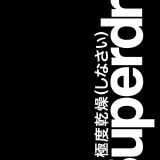Title Page
-
Site
-
Location
-
Inspected by
-
Date
Corrective Maintenance
Servicing Checklist
-
1. Are standard lubrication fittings used so that no special extensions or fittings are required?
-
2. Are standard lubricants that are already in the federal supply system specified?
-
3. Are adequate lubrication instructions provided that identify the frequency and type of lubricants required?
-
4. Are filler areas for combustible materials located away from sources of heat or sparking, and are spark-resistant filler caps and nozzles used on such equipment?
-
5. Are fluid replenishing points located so that there is little chance of spillage during servicing, especially on easily damaged equipment?
-
6. Are filler openings located where they are readily accessible and do not require special funnels?
-
7. Are fuel tank filler necks, flexible lines or cables, pipe runs, fragile components, and like items positioned so they are not likely to be used as convenient footholds or handholds, thereby sustaining damage?
-
8. When bleeds are required to remove entrapped air or gases from a fuel or hydraulic system, are they located in an easily operable and accessible position?
-
9. Are drains provided on all fluid tanks and systems, fluid-filled cases or pans, filter systems, float chambers, and other items designed or likely to contain fluid that would otherwise be difficult to remove?
-
10. Are drain fittings of few types and sizes used, and are they standardized according to application throughout the system?
-
11. When drain plugs are used, do they require only common hand tools for operation, and does the design insure adequate tool and work clearance for operation?
-
12. Are drain cocks or valves clearly labeled to indicate open and closed positions, and the direction of movement required to open?
-
13. Do drain cocks always close with clockwise motion and open with counterclockwise motion?
-
14. When drain cocks are closed, is the handle designed to be in the down position?
-
15. Are drain points placed so that fluid will not drain on the technician or on sensitive equipment?
-
16. Are drain points located at the lowest point when complete drainage is required or when separation of fluids is desired (as when water is drained out of fuel tanks)?
-
17. Are drain points located to permit fluid drainage directly into a waste container without the use of adapters or piping?
-
18. Are drain points placed where they are readily operable by the technician?
-
19. Are instruction plates provided, as necessary, to insure that the system is properly prepared prior to draining?
-
20. Are drain points located so that fuel or other combustible fluids cannot run down to or collect in starters, exhausts, or other hazardous areas?
-
21. Are lubrication requirements reduced as much as possible?
-
22. Are pressure fittings provided for the application of grease to bearings that are shielded from oil?
-
23. Are oil filler caps designed so that they:
-
a. Snap and then remain open or closed?
-
b. Provide large round opening for oil filling?
-
c. Permit application of breather vents, dipsticks, and strainers?
-
d. Are located external to enclosure, where possible. to eliminate necessity for access doors, plates, or hatches?
Completion
-
Additional Observations
-
Technician Name & Signature











